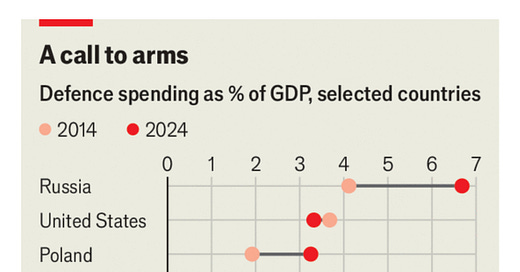There are approximately 230 Russian and Ukrainian brigades in Ukraine, though most are under-strength. Many European countries would struggle to produce a single combat-capable brigade each.
Europe would need to form 50 new brigades, calculates Bruegel, a Brussels-based think-tank, many of them “heavy” units with armour, to replace the 300,000 American troops that it estimates would be deployed to the continent in a war. The manpower requirements would be forbidding.
Only some air forces, like Sweden’s, have trained enough for high-intensity aerial warfare. Moreover, airborne electronic warfare and intelligence, surveillance, target acquisition and reconnaissance (ISTAR), or the ability to find and assess targets, “are almost exclusively provided by the US”, notes Mr Bronk.
“We need to have discussions with both the British and the French—the two European nuclear powers,” Mr Merz said on February 21st, “about whether nuclear sharing, or at least nuclear security…could also apply to us.”
In practice Britain and France cannot replicate America’s nuclear shield over Europe with their relatively small arsenals—around 400 warheads in all, compared with more than 1,700 deployed Russian warheads.
American insiders sniff at the idea that this is adequate for deterrence, since they believe that Russia would be able to limit the damage to itself (never mind that Moscow might be gone) while inflicting worse on Europe.
Doubling or tripling the size of the Anglo-French arsenals would probably take years and cannibalise money needed to build up conventional forces; Britain’s deterrent already consumes a fifth of defence spending.




